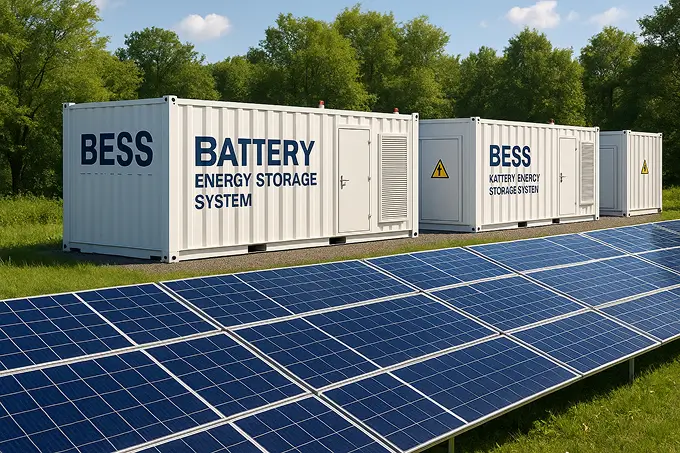Battery Development
This article looks at the development of batteries and how virtual testing and software solutions can accelerate and improve the development of battery-powered products while keeping the time to market low.

Addressing Key Challenges of Battery Development
Battery engineers around the globe are currently under enormous pressure for battery development. Companies are shifting their strategies towards electrification at an unprecedented speed. When it comes to e-mobility trends, the announcements of ending the development of petrol cars are piling up. For example, Mercedes-Benz being one of the automakers to present their exit strategy – very ambitiously they will only launch fully electric platforms from 2025 onwards.
Development teams in the industry are now rushing forward to deliver upon these promises. The most talented engineers are facing some severe challenges. Batteries are a very complex electro-chemical system that degrades over time. More practically speaking, the capacity fade leads to a decreasing range, while the resistance increase can reduce the available power – most notably probably during charging, which may take longer over time.
In order to provide a superior customer experience at a reasonable price for the entire lifetime of the vehicles, engineers for EV battery development must assess the impact of usage on the vehicle with several parameters being outside their control. Geography, for example, plays a role. Hotter or colder climates, flat or hilly topography all impact the way battery ages.
The driver behavior such as driving style or usage of high-power charging can be somewhat influenced but may still differ significantly – and high-power charging does have a major effect on battery aging. Delivering the ideal system with the allowed depth of discharge, thermal management, and size as well as the type of battery becomes essential. Next step - selecting cells and designing battery systems maximizing the value of battery energy storage systems.
Understand the impact of different use cases & applications
To understand the behavior of the battery in different conditions and for different use cases, engineers have a couple of options. First, cell manufacturers already provide insights and warranties for the performance of the cells in the field. Albeit limited, these enable the first comparison of cells on paper and a shortlisting of relevant cell suppliers, chemistries, and formats.
In order to dive deeper into these cells and assess their specific applications and requirements, engineers must now revert to testing or simulating battery behavior. Testing is generating great results, but they are often prohibitively expensive and take years to yield reliable results. Simulations provide better and quicker results. In particular when they are available early on.
Virtually testing battery behavior over time
That is where the TWAICE Battery Model Library comes into play. It provides access to numerous high- fidelity battery cell models of the latest batteries on the market. These models simulate the electrical, thermal, and aging behavior for any given load profile, i.e., usage.
The simulation models are easily downloadable from the TWAICE Analytics Platform. On the platform, engineers find everything they need to know about the battery cells and the corresponding models in one view. Once the model is downloaded, the engineer can use it in their preferred simulation environment – as a standard, it comes in Matlab® Simulink®.
Let’s take a closer look at what is possible once the models are downloaded and ready to go.
At the very beginning of battery development, it is all about finding a suitable cell. Engineers can use the models to test the shortlisted cells virtually and compare the performances for their specific use case. This saves a lot of money and time compared to performing tests in the lab. Nevertheless, they can accurately assess the electrical, thermal, and aging behavior of cells over time and ensure that the cell will yield high customer satisfaction without being overly pricey.
Once the engineer has selected the right cell, a better understanding of the overall system requirements can be derived from the models. They allow us to quickly understand how batteries behave (electrically & thermally) and degrade (energy and power). Based on this information, the general dimensions of the system and the requirements for ancillary components can be generated. Getting a clearer picture of the required specifications, e.g., the cooling requirements over time, helps to make the final product better.
In short, the TWAICE battery model library makes battery development more economical and faster and leads to a better overall battery system design.
Empowering our solutions – The TWAICE Battery Labs
As mentioned, the early availability of models is one of the keys to success. At TWAICE we have optimized the generation of such models. Numerous models of commercially available cells are already available and new ones are added every week. Building these simulation models as well as proprietary models for clients with custom cells requires data – data we generate in our own labs.
In these in-house battery labs, we are calibrating our software and simulation models based on a limited amount of testing through a cutting-edge approach. Among other aspects, we leverage an artificial neural network to adapt an existing model. This model is based on years of measurements on different cell chemistries and formats and provides the basis for all further developments. After the battery cells are parametrized, the accuracy is validated in additional tests.
Beyond models – Your partner for battery development and operation
Leveraging our extensive testing experience, we are also working on software solutions to optimize the battery data handling and lab data analytics.
Get in touch if you want to learn more about software solutions for your lab data management or the overall battery analytics platform.
Sign up for the next live group demo and learn how TWAICE can transform your BESS operations. In just 30 minutes, you’ll get a demo of key features and use cases, and engage with our product experts for a live Q&A.


.avif)

.avif)
